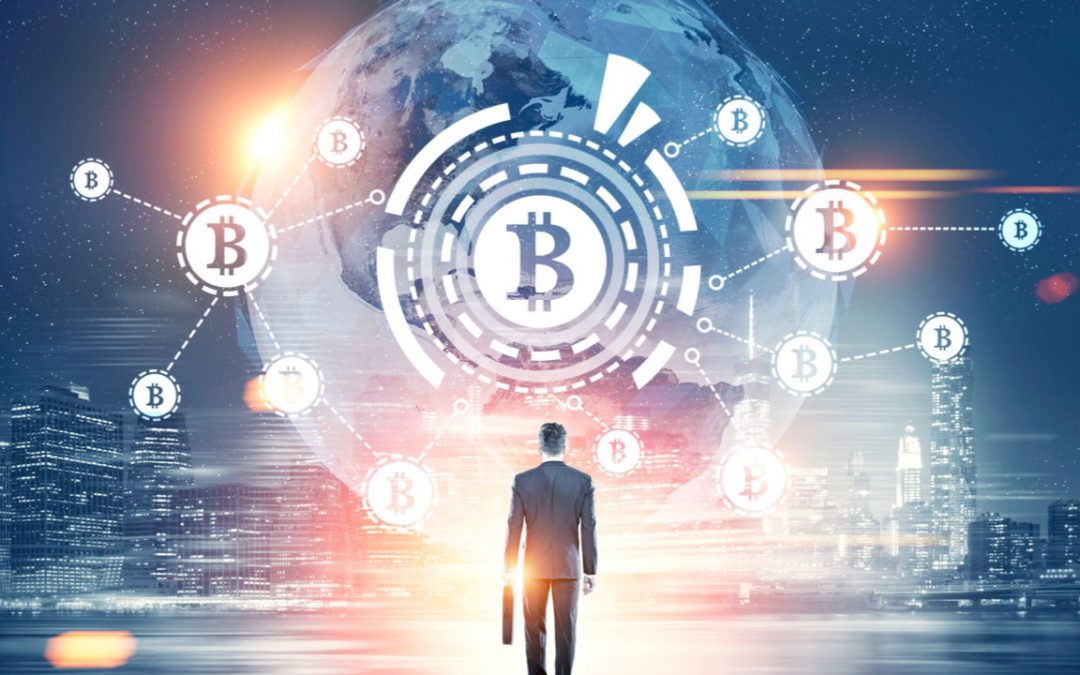Cryptocurrencies should be decentralized by nature. The blockchain functions because a decentralized network of computers consonantly works to verify transactions. Decentralization is significant because, without it, you have a trust-based system. And if a cryptocurrency becomes a trust-based system, then it is really not much different than digital fiat currency.
But simply because something is a cryptocurrency, doesn’t mean that it’s decentralized in the way that most people believe it would be. Many cryptocurrencies are more centralized than you think. To understand how that can be, you need to understand what it means to be decentralized and how it differs among cryptocurrencies.
What’s the Difference Between Centralization and Decentralization?
Defining decentralization is relatively straightforward. The best way to do it is through a nonexample, centralization, or in this case, fiat money. With fiat money, a specific government controls the printing and distribution of the money within a system. They use this system to enforce the value of that money.
This system involves trust. The people of that system must have faith in their governments. Citizens need to believe that their government will enforce the legal tender and won’t manipulate that system to the advantage of a select few. And this is where centralization runs into problems.
However, in a trustless system, like with cryptocurrencies, for instance, the system is spread out both physically and in terms of wealth. This helps prevent specific parties from controlling too much of one aspect of the crypto. If a party holds too much control, they can manipulate aspects of that currency to their advantage.
When you analyze aspects of several cryptocurrencies, you see that they don’t all fully fit the definition of decentralization. Some have mining power limited to a small group, others have systems where a severely small minority holds a majority of the wealth. In other cases, developers control most of the project or governments provide oversight on the platforms. Either way, some cryptos aren’t necessary the decentralized versions everyone expects them to be.
Here are a few cryptos that are more centralized than you thought:
Petro, The Government Controlled Crypto
Petro (PTR) is a new cryptocurrency created by the Venezuelan government. It severely lacks the qualities of a decentralized, trustless system. The government mined all of the coins before launch and holds them for distribution. They’ve placed a value on the cryptocurrency at one barrel of oil per crypto. In other words, they’ve pegged the coin one to one with the country’s vast oil supply.
In reality, the “cryptocurrency” is very much under control of the government. Should they wish to shut it down, they can. Users have to trust that they will honor the pegged value of the crypto, as well. In short, there is no consensus, no transparency, and ultimately, no decentralization.
Tether And Centralized Minting
USDT, or Tether, is a highly centralized cryptocurrency as well. Users can exchange USD for USDT for a value of one to one, allowing for more liquidity on the markets. Tether speeds up the process of converting fiat currency into tokens for trading on exchanges.
However, there is a certain amount of trust required to use Tether. First, Tether prints tokens based off of how much USD it has in reserve. This means the ability to “mint money” is under their complete control, making it highly centralized in that aspect.
They’ve previously advertised that they will regularly audit their holdings to ensure they have the required USD to back the USDT in circulation. However, they have failed to maintain this promise to the frustration of the crypto community.
Is IOTA as Centralized as People Say It Is?
IOTA (MIOTA) is a distributed ledger that uses tangle instead of blockchain to verify transactions with the goal of improving the Internet of Things (IoT). One of IOTA’s main attractions is Tangle. Through this alternative to the blockchain, users avoid miners and fees by verifying two previous transactions. This means it can scale effectively with nominal costs.
Tangle has an issue with centralization, and that’s the coordinator node. The coordinator nodes exist to prevent an attack on the system. But the coordinator node is controlled by the IOTA Foundation. Whether or not it will interfere with validating transactions or censor them all together is a different argument. However, it is able to, making a strong case for centralization.
Why is Ripple Centralized?
Ripple (XRP) allows for the rapid transfer of money between parties on a global network with minimal fees. Currently, international banking is a complicated process that involves easily avoidable risk. Ripple hopes international banks will adopt it for the transfer of money across the globe.
When it comes to decentralization, however, Ripple fails in many areas. Ripple minted all of its currency during production and still holds a majority of it. They’re allowed to release 1 billion XRP a month into the market.
This gives them the power to create swings in market value. But also, the crypto’s servers are under control by Ripple according to a report. This means that Ripple can shut down transactions if they want.
Government Oversight and NEO
NEO (NEO), or the “Chinese Ethereum,” serves as a platform for verifying physical assets, proof of ownership, and digital identity through its blockchain. NEO’s often seen as a competitor with Ethereum and with the advantage of being able to maintain a higher transactions rate per second.
This increase from Ethereum’s 10 transactions per second to around 10,000 transactions per second comes as a result of centralization. In NEO’s network, nodes control the processing of transactions. Additionally, those who run nodes are subject to government authorization and legally liable.
NEO argues that their nodes will be spread out globally, but still controlled by NEO for the most part. Add to that government oversight, and many are concerned.
Is Bitcoin Really Centralized?
This one seems out of place, but depending on who you ask, Bitcoin (BTC) is very centralized. This is for two reasons. The first is that a significant amount of the mining pool rests in one geographic location, China. This opens it up to potential influence from centralized authorities or other forms of manipulation.
The second reason is that a few investors hold a majority of the currency. How many? According to this article, 61 percent of all BTC is held by .07 percent of the wallets.
Should You Avoid Centralized Cryptocurrencies?
In situations like the Petro, where you’d be violating international sanctions by investing in that crypto, it’s a safe bet to avoid it. But just because other cryptos have centralized aspects to it doesn’t mean it needs to be altogether avoided.
Cryptocurrencies aim to utilized components of decentralization and blockchain/ledger technology to enhance aspects of society. The most important point is to do your own research. Know what you’re investing in so that you’ll be able to make fully informed decisions along the way.











